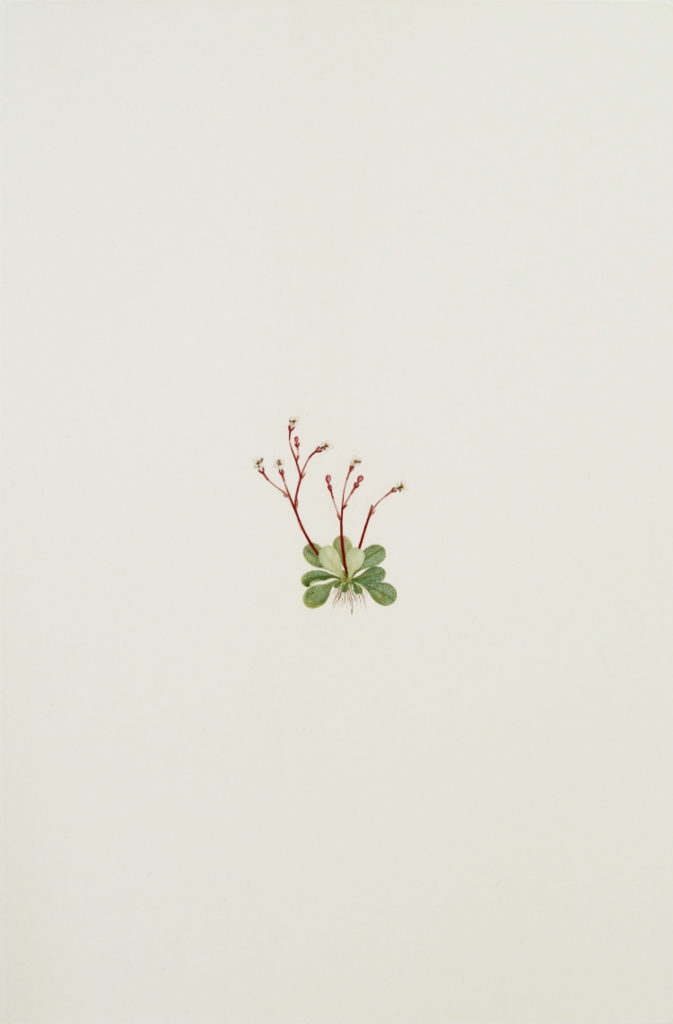
SYDNEY PARKINSON and FREDERICK POLYDORE NODDER (artists)
‘Plate 173. Stylidium Rotundifolium, R. Brown, Lobeliastrum latifolium (Stylidiaceae)’
London: Alecto Historical Editions in association with the British Museum (Natural History), 1980-1990.
Engraving by Daniel MacKenzie, printed à la poupée by Alecto Historical Editions
Limited to 116 impressions, this no. 2 of 3 for exhibition and numbered ‘EP 2/3’
£125 inc. VAT
❧ STYLIDIUM ROTUNDIFOLIUM, R. BROWN, LOBELIASTRUM LATIFOLIUM (STYLIDIACEAE)
Species collected at Endeavour River, Australia
17 June – 4 August 1770
The Stylidium Rotundifolium is one of seven Stylidium plants discovered by Banks and Solander (out of ca. 300 known to belong to the species today). It is an annual plant found in northern Australia, growing up to 18cm tall, and flowering from April to October. Like the Dendrobium Canaliculatum, the Stylidium Rotundifolium would not be described scientifically until it appeared in Robert Brown’s Prodromus Florae Novae Hollandiae et Insulae Van Diemen (London, 1810, vol. 1, p. 571).
‘By 28 July the excitement to find new plants had vanished; there seemed to be none left to find. “Botanizing with no kind of success”, Banks wrote in his journal, “The Plants were now intirely completed and nothing new to be found, so that sailing is all we wish for if the wind would but allow us”. On 3 August the Endeavour set sail again’ (Stearn, ‘A Royal Society Appointment’, p. 114).
SPECIFICATIONS
The engravings are all of a very similar size, with platemarks of circa 457 x 305mm, and are printed on acid-free Somerset mould-made 300gsm paper manufactured by the Inveresk Paper Company. Each sheet is watermarked ‘AHE’, measures 724 x 556mm, and bears blind embossed stamps incorporating the publishers’ and printer’s chops, the copyright symbol, and date of publication; the initials of the individual printer, the plate number, and the edition number are recorded in pencil. The engravings are protected by a bifolium of acid-free Somerset mould-made 300gsm paper, cut to form a window mount on which is recorded the modern and Banksian names of the plant, the location and date of its collection and the name(s) of the artist and engraver.
This print accompanied by a certificate of limitation.
© Type & Forme and Alecto Historical Editions/Trustees of the Natural History Museum 2020

